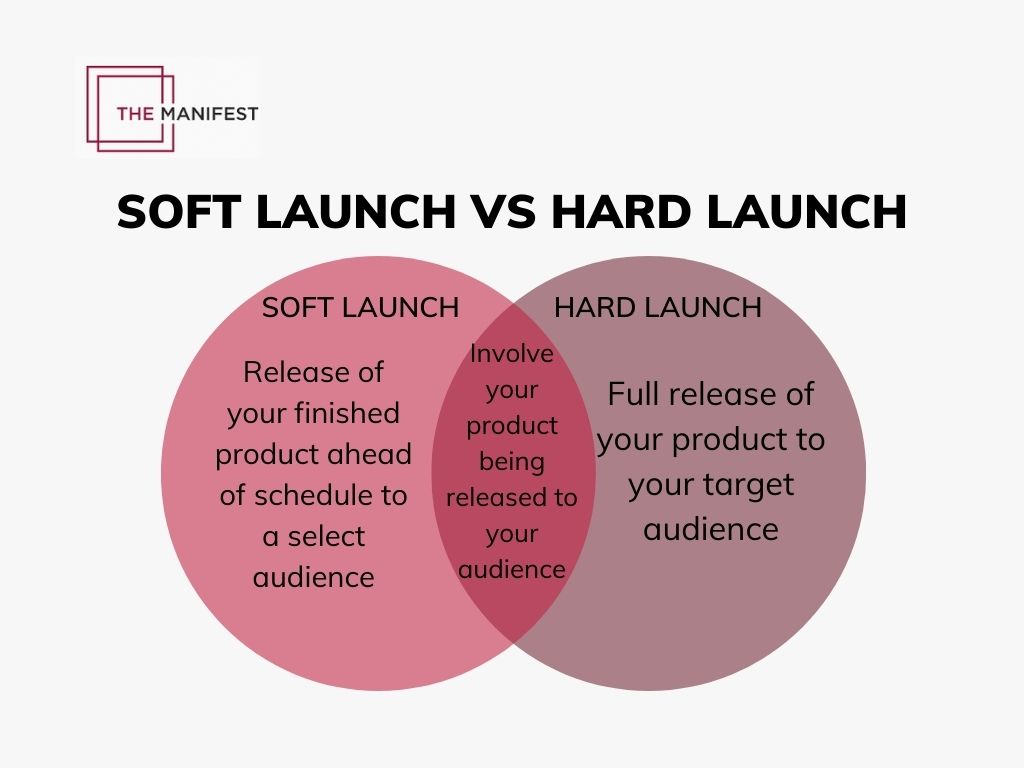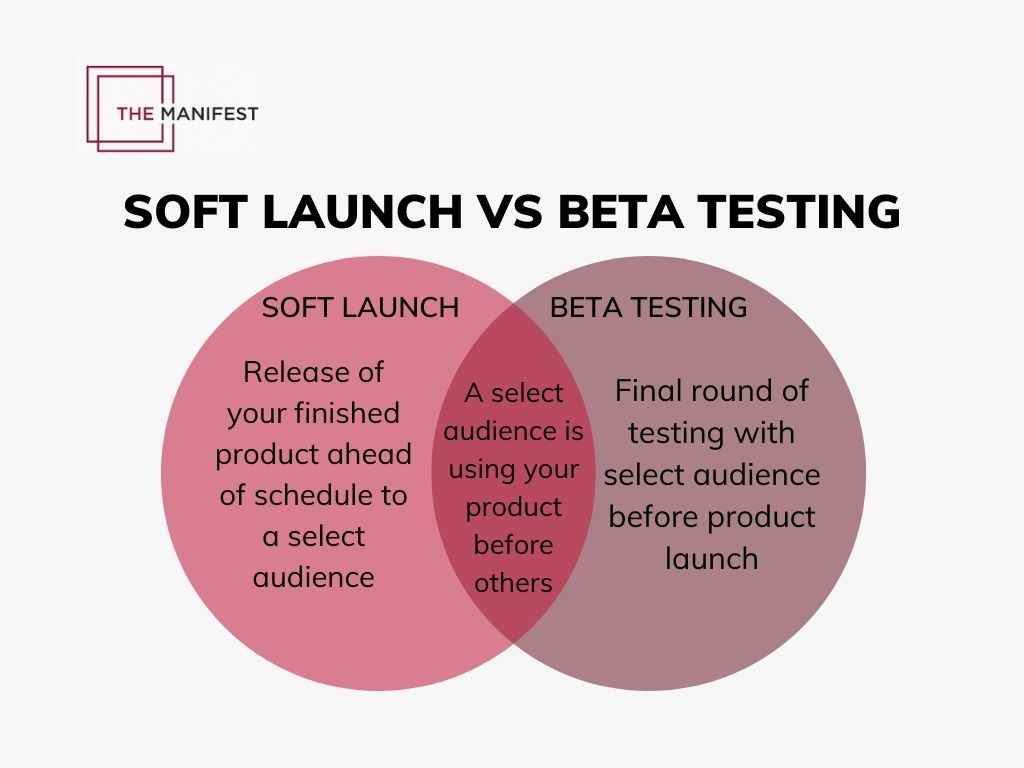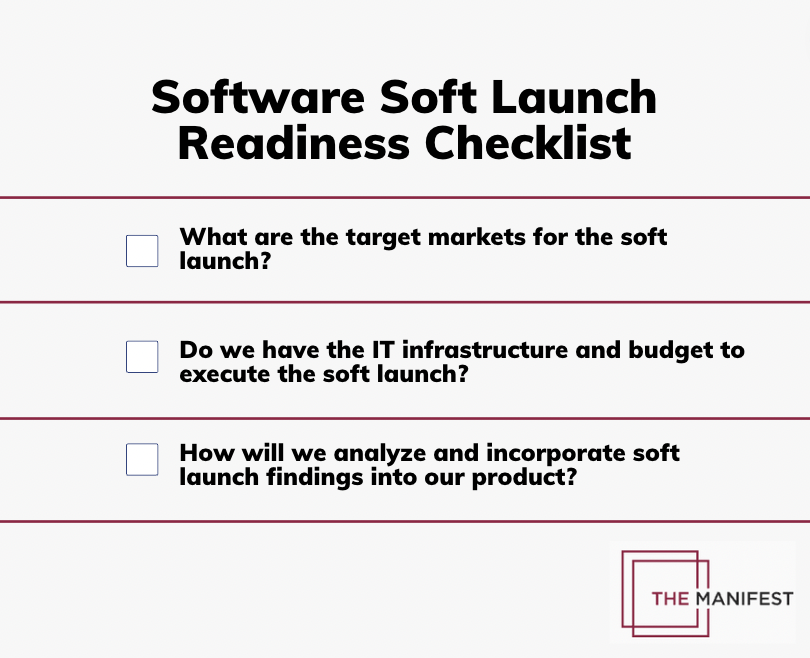What is a Soft Launch in Software Development? [With Examples]

What is a Soft Launch in Software Development? [With Examples]
Regardless of the level of testing performed prior to launch, there’s no way to truly guarantee that your product will be received well by end users. New features and functionalities may not appeal to your user base to the degree your team expected. Additionally, there may be gaps in your user experience that don’t come to light until real users have used your software. Many software teams opt to do a soft launch to avoid facing product performance consequences early on.
Updated November 29, 2023
As with any product, especially for the first time for companies, one of the most stressful aspects of the software development process is the anticipation leading up to the full launch of the product.
A launch can certainly be one of the most frustrating parts of the software development process. In fact, only 11% of respondents to a recent Gartner survey felt that their products met all internal criteria set prior to launch.
Administering a soft launch is a great way to avoid this frustration and uncertainty. By soft launching your product, you can gauge metrics in a controlled marketplace and use your findings to fine-tune your new product prior to its full release.
In this article, we’ll help you understand the nuances of a soft launch. That way, you and your team can build a winning soft launch strategy for your business.
Looking for help with a product launch? Consider help from a top-rated software development firm on The Manifest.
What is a Soft Launch?
A soft launch is the release of a finished product ahead of schedule to a limited audience with a minimal marketing push.
The soft launch draws its roots from the restaurant and brick-and-mortar retail industries. In these markets, new locations often undergo a “soft opening.” In a soft opening, operating hours or menu and merchandise offerings are limited to help the team work out any process difficulties prior to a grand opening.
Based on these soft openings, soft launches have translated well into many other industries, namely software development.
In particular, the field of mobile app development has proven ripe for soft launch potential. With success in the field being tied to positive customer feedback, developers often opt for a soft launch to test app performance against a segment of their target audience for user feedback prior to a full release on the app store.
Soft launching is also an easy way for your business to conduct A/B testing. This testing involves comparing two versions of a product to determine which performs better.
For existing software, if you soft launch a new version to a small number of users, you’ll be running two versions of the software at the same time. In doing so, you’ll have set up the environment for A/B testing and can determine if new features truly add value.
Soft Launch vs. Hard Launch
When discussing soft launches, it’s important also to consider the other major type of product launch: the hard launch.
A hard launch is a full release of a product to your target audience. In a hard launch, all prior testing that has been completed by testers is deemed to be all that is needed to bring your software to market fully.

Based on what we’ve discussed about soft launching your product so far, skipping straight to a hard launch may seem rash. However, in certain scenarios, this approach can be beneficial to your company. For a well-known product with a dedicated user base, the fanfare that comes from a hard launch can drive the quick realization of revenue for your business.
Tech giant Apple is considered a master of the hard launch. When they launched the iPhone 6 and 6 Plus, their intense marketing efforts paid off with over 10 million units sold during the September 2014 weekend release. They then topped this figure the next year, with 13 million 6s and 6s Plus units sold in their launch weekend.
Soft Launch vs. Beta Testing
Another important concept to know when learning about soft launches is beta testing. Soft launching and beta testing are similar practices, and people sometimes confuse the two.
Beta testing is a final round of testing done by real users of the product to identify any bugs or usability issues prior to releasing the software.
Beta testing differs from soft launching in its scope and intentionality. While beta testing can be both closed (limited to a group of users targeted by the test team) or open (allowing for any interested users to use the software and submit feedback), it is a purely developmental effort.

The software test team conducts beta testing to allow for optimization of any front- or back-end software components prior to ending the testing stage. Conversely, a soft launch is a collaborative effort between several parties, mainly your development and marketing teams.
Who is Involved in a Soft Launch?
As stated above, a soft launch is not a developer-led effort like test activities are. Rather, a soft launch should be run jointly by a couple of groups within your overall team.
Development and Technical Teams
Your development team should certainly be involved in any soft launch activities. The test and quality assurance portion of your development team will be the ones to give the sign-off that your software has been sufficiently tested and is ready for any sort of release or official launch.
Even if your team’s test activities eliminate all bugs from your product, having a large pool of real users will allow you to test the UX of your software in as real of a manner as possible.
Outside of UX-related changes, customer feedback from a soft launch may help your team pinpoint back-end areas for improvement. New users brought in from the soft launch may provide high-level feedback on functionality that may unearth weaknesses in your product’s code.
Marketing Team
The benefits of a soft launch aren’t limited to your technical staff. Your marketing team should also be involved with any product’s soft launch to ensure it’s properly planned, executed, and learned from.
Your soft launch strategy should be influenced by your company’s marketing strategy. Your marketing team can provide information such as the most viable target markets. Incorporating this information will help you plan the most effective soft launch possible.
A soft launch can also be a time for your marketing team to experiment. For instance, they may try a new messaging approach or marketing campaign to attempt to reach potential customers being missed by the current user acquisition strategy.
Your marketing team is also likely to be at the forefront of customer feedback collection. Because they typically handle your company’s social media and email marketing presence, they are the ones who will receive direct feedback from soft launch users.
Many of the success metrics for the soft launch, such as conversions, will be marketing-related. Additionally, user acquisition and interaction data from the soft launch can help your marketing team optimize the software‘s monetization strategy without hampering any retention goals.
Additional Teams as Needed
Occasionally, other teams may need to be brought in for your soft launch. For instance, your development team may need to work with your IT infrastructure team to set up a separate server to support a new software’s soft launch.
Software Soft Launch Readiness Checklist
With an understanding of what a soft launch is and which parties within your company should be involved with it, you’re ready to determine your soft launch readiness
You may think that the only requirements for a soft launch are a fully-tested MVP and an overall marketing strategy. However, a successful soft launch requires a great deal of planning from all parties involved.

Here’s a soft launch checklist that can help you make sure your team is ready to properly soft launch your product:
- What are the target markets for the soft launch?
- Do we have the IT infrastructure and budget to execute the soft launch?
- How will we analyze and incorporate soft launch findings into our product?
Read on for an explanation of how these checklist items translate into preparatory actions for your team.
1. What Are the Target Markets for the Soft Launch?
One of the major benefits of conducting a soft launch is that it can give you tangible feedback from your real customer base that you can incorporate into your software prior to a full release. As such, you’ll want to take great care in picking a target market for your soft launch.
Your team should have decided on an ideal marketplace for your final product at the start of the development process. However, a successful soft launch should be focused on smaller segments within this user base.
When planning your soft launch, you and your team will need to define who your target markets are. Then, you should determine how to encourage them to buy into a soft launch.
If your company has an established software suite or is looking to soft launch new functionality within an existing product, it should be easy to define and connect with a target audience that makes sense for your soft launch.
On the other hand, you may be working on a product that falls outside the normal scope of your business’ offerings. Similarly, you may want to use the soft launch as an experimental space to see how a new product fares with unfamiliar customer groups.
Regardless of the approach you choose for defining your soft launch target market, it’s important to set clear guidelines for the market you do choose. Any demographic or other parameters should be easy to gauge within your soft launch user base.
Additionally, user groupings should be tracked through the entirety of the soft launch experience. That way, the marketing team can track important trends and learn from them to better appeal to these groups upon full launch.
2. Do We Have the IT Infrastructure and Budget to Execute the Soft Launch?
After your product is ready and your target markets are set, you should ensure that any internal constraints are addressed.
From an IT infrastructure perspective, your team should ensure that you have the server capacity to successfully execute the soft launch.
Ideally, any server concerns would have been addressed in the test phase. However, if your company is new to the software development field or if the product itself is new, an expedited server setup timeline may be necessary to accommodate the soft launch.
Furthermore, as your soft launch strategy is being refined, your team should ensure that it remains feasible from a budget perspective.
While it may not require a full marketing campaign like a hard launch would, a soft launch still requires your business to connect with users and track customer feedback. Moreover, any experimentation you decide to do with the soft launch could increase the overall scope of the development process and create budgetary challenges.
3. How Will We Analyze and Incorporate Soft Launch Findings into Our Product?
Before executing the soft launch, you and your team need to define how you will treat any findings that come from the soft launch’s execution.
From a development standpoint, you should determine if there are areas of concern within the front- or back-end of your software prior to the soft launch. Not only will this prevent scope creep, but it will also make customer feedback more actionable.
Users during this period won’t be providing your development team with the same level of technical detail your test team did. Instead, they’ll provide higher-level feedback. Knowledge of predefined areas of concern will be helpful in turning this feedback into code changes.
Your marketing team should also set forth metrics worth tracking prior to the soft launch. These metrics should be geared towards measuring the customer lifetime value (CLTV) of your software.
CLTV is defined as the calculated profit a new customer will bring to your business based on monetization, retention, and vitality. To calculate CLTV, you’ll divide your average revenue per user by your churn rate.
Average revenue / Churn Rate = CLTV
In addition to these statistics, your marketing team should also plan to track metrics, including early retention rates, average revenue per paying user, and conversion rates.
Any findings against these metrics should be used to optimize the monetization, retention, and vitality of your app to improve CLTV.
Real-World Soft Launch Examples
We’ve talked at length about theoretical soft launches. However, some real-world examples may help you further understand the value a soft launch can bring to your software product and business as a whole.
Soft Launch Example: Pokémon GO
The concept of a soft launch is a popular one in the mobile game developer community. For instance, many developers of games intended for full release in the US choose to bring the game to market in Canada first to work out user issues.
One of the most popular and most successful mobile game soft launches was the soft launch of Pokémon GO.

Source: Pokemon Go Live
Before releasing the franchise-based mobile app worldwide, publisher Niantic did a soft launch of the game in Australia, New Zealand, and the United States on July 6, 2016.
Soft launching in these relatively large markets allowed Niantic to check the need for any server and monetization changes while building further hype for the wider launch.
This soft launch was not without its shortfalls though. Over the following week, the game was released throughout Europe. Due to the high demand generated, the anticipated server need was not enough, and the game was virtually unplayable for a short time.
As you plan your own soft launch, a high-profile case like Pokémon Go can illustrate the benefits and hurdles you may encounter.
Soft Launch Example: Gmail
With 1.8 billion active users worldwide as of January 2020, it’s difficult to remember a time when Gmail wasn’t the premier consumer email platform. However, the service was initially subject to a nearly three-year soft launch.
When Google launched Gmail on April 1, 2004, it was an invite-only service. If someone wanted a Gmail account, they needed to receive an invitation from a current user. At this time, it was common to see Gmail accounts for sale on eBay for hundreds of dollars each.

Source: Time
Once Gmail was made more robust in 2005, Google widened the release to anyone with a mobile phone. Finally, on February 14, 2007, the platform was made open to anyone.
The elongated soft launch was huge for Gmail. Not only did it increase the anticipation around the service’s full launch, but it allowed the development team extra time to fine-tune its features.
Creating an email service that acted as a web app and integrated targeted advertisements was a new idea in 2004. By soft launching Gmail, Google made sure they set everything up properly and ended up creating a platform that redefined what consumer email could be.
Software Soft Launches Encourage Customer Satisfaction
As we’ve demonstrated, the software soft launch is an important concept for any development team to understand. Though the practice is most popular with web and mobile apps, it can be useful in a number of development scenarios.
A soft launch allows you and your team to integrate real customer feedback into your product prior to full launch. It also allows your marketing team to get real test data on monetization and retention efforts in a way they wouldn’t be able to from any previous testing endeavors.
When incorporated into the proper project and diligently prepared for and learned from a soft launch can be the difference between success and failure for your software.
Want help with an upcoming project? Contact a software development company on The Manifest.
Additional Reading:
